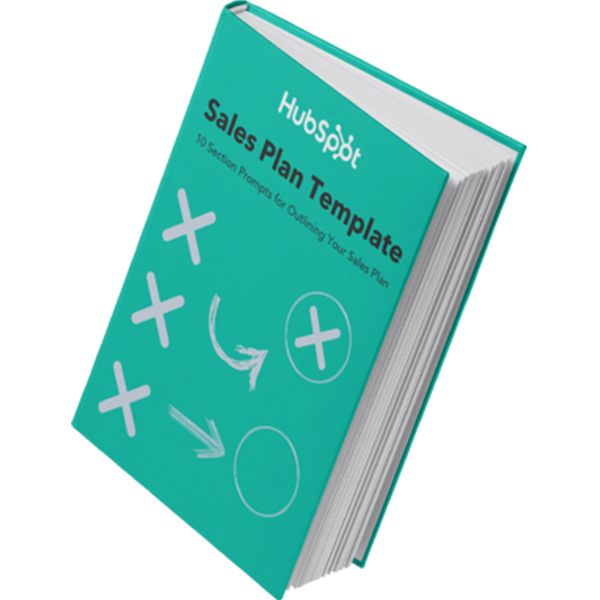Some things flat-out haven‘t aged well — like the first food pyramid, those ad campaigns from the ’50s where doctors endorsed cigarette brands, and roughly 90% of comedies from the '80s (to name a few).

It's a trend that has a place in virtually every facet of life, and sales is no exception — a lot of once-popular sales tactics have aged more like milk than wine, and it serves you to know which of those techniques are worth kicking to the curb.
To help you get there, we connected with some sales leaders for their takes on some outdated sales tactics you need to ditch. Let's see what they had to say.
6 Old-School Sales Tactics You Need to Ditch
1. Pushing Artificial Urgency
Juliet Dreamhunter, Founder and AI Strategist at Juliety, says, "Definitely ditch those phony ‘20 minutes left!’ countdown timers on your landing page. They're a total turn-off — everyone sees through the trick, and it makes you seem desperate rather than appealing. These fake deadlines undermine trust with potential customers, who may start wondering what else about your offer is less than genuine.
“If you've got a genuinely time-limited offer, a timer can be effective. But those fake 'urgency' tactics? They erode trust with your customers way faster than they'll get you sales. Instead, focus on building genuine value and showing why your product or service is worth their consideration.”

Free Sales Plan Template
Outline your company's sales strategy in one simple, coherent sales plan.
- Target Market
- Prospecting Strategy
- Budget
- Goals
2. Leaving Next Steps Vague at the End of a Sales Meeting
Amar Ghose, CEO of ZenMaid, says, "One outdated tactic I‘ve seen is leaving next steps vague at the end of a sales meeting. You know, like saying, ’I‘ll call you on Monday at 11 a.m. to follow up.’ This method isn‘t reliable enough to make sure your potential client remembers the call — and you don’t want to risk losing a sale.
“Instead of just verbally agreeing on a follow-up, scheduling the next meeting right away is much more effective. Use an online calendar or send an email invite. This way, you ensure it's locked in your prospect's schedule before you finish your current conversation.”
3. High-Pressure Closes
Syed Balkhi, Founder of WPBeginner, says, "One sales practice that‘s out of date and should be avoided is high-pressure closes. It’s surprising to see how many businesses still do this, even though it's turning customers away at record rates. A recent example that comes to mind is when I was in the market for a new gym. I called a well-known gym one time and asked for their pricing structure.
"I did not make contact again after that first call because it was overpriced. Despite this, they sent me three emails, called five times, and even sent me text messages over the following month — trying to get me to sign up after I told them I wasn't interested. This type of aggressive approach screams desperation and makes people not want to associate with you or your business.
“My advice is to focus on building authentic relationships with prospects by offering them something helpful or valuable without asking for anything in return. If they are interested, they will stick around and give you an opportunity to talk about your solution without you needing to borderline harass them.”
4. Leaning Too Heavily on Product Demos
Paw Vej, Chief Operating Officer of Financer.com, says, "First of all, you should avoid depending on product demonstrations to seal the deal. In the '80s, product demos were a big deal, particularly in the boardroom, where leads gathered the information they needed. But that was over three decades ago, and times have evolved.
"With the advent of the internet, leads often have the information they need beforehand, making in-person product demos less relevant. While you don't need to completely discard product demos, consider leveraging the internet for online demos. This approach is less disruptive to the busy schedules of potential leads.
“Remember, your product demo isn't the sole factor in successful pitching. Given the competitive market, it's likely you're not the only one selling your product, so you need to distinguish yourself in other ways.”
5. Over-Reliance on Case Studies
Patrick Beltran, Marketing Director at Ardoz Digital, says, "Avoid over-reliance on case studies. Although case studies are a powerful tool to showcase credibility and social proof, sellers often utilize them prematurely, which is a mistake and not effective.
"Case studies effectively highlight the value you can offer, but only after you’ve fully understood how your product or service addresses the problem. They should be employed to reinforce value, not to manage objections at the start of the sales process or to do the selling for you. Introducing them too early means you lack sufficient knowledge about the prospect or their business to present a relatable case study.
“You need to first understand their needs and challenges and clarify how your solution can be valuable. Only then is it appropriate to introduce a case study. Representatives should bring in case studies later in the sales process to back up what they’ve already conveyed about the value of their solution. Case studies remain valid as sales tools, but they shouldn’t be the only method used.”
6. Hard and Impersonal Selling
Bhavik Sarkhedi, Growth Head and CMO of Content Whale, says, "From my experience, hard-selling is a tactic that‘s definitely past its prime. Today’s consumers are more informed and skeptical than ever, making the aggressive push to close a deal more off-putting than effective.
"Similarly, relying solely on cold-calling without any prior research or personalized approach can lead to high rejection rates. It's a method that not only frustrates potential customers but also wastes valuable time that could be better spent on more targeted, relationship-building strategies.
“Additionally, the overuse of scripted pitches without flexibility or genuine engagement fails to connect with prospects on a personal level, making it hard to establish trust. In today's sales environment, adopting a more consultative, personalized approach and leveraging insights and data to guide conversations are key to resonating with modern buyers.”
Sales is ever-evolving, and if you want to work as effectively as possible, you need to be too. That means staying on top of which trends and tactics to adopt and which ones to leave behind. Hopefully, the insight in this article has helped you with the latter — and your sales game is leaner, more modern, and smarter as a result.









![Why Your Company Should Invest in Inbound Sales During a Recession [Expert Insights]](https://blog.hubspot.com/hubfs/Recession%20inbound%20%281%29.jpg)

